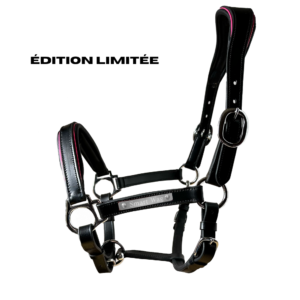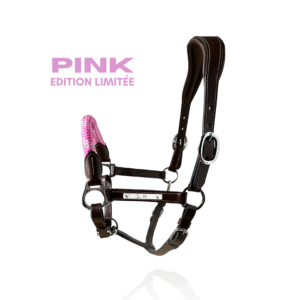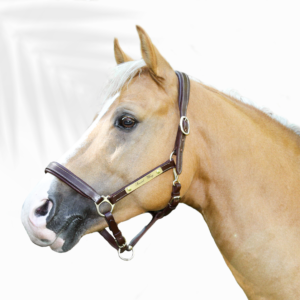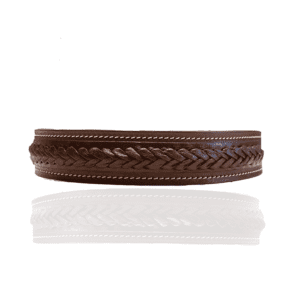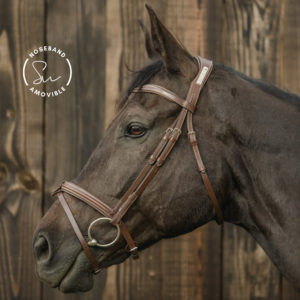The guide to choosing the perfect halter for your horse.
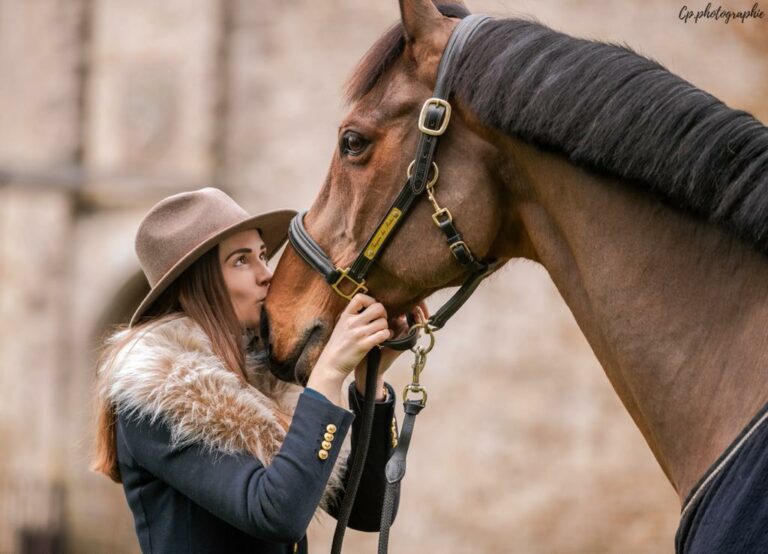
MINI-GUIDE: UN LICOL SECURITAIRE ET FONCTIONNEL POUR SON CHEVAL
Choisir le bon licol pour son cheval est primordial pour son confort, sa sécurité et son bien-être général. Avec tant d’options aujourd’hui sur le marché, il peut être difficile de savoir par où commencer et ce qui conviendra le mieux à son cheval. Dans ce petit guide, nous allons vous aider à naviguer à travers les différentes options disponibles et à choisir le licol parfait pour votre fidèle ami cheval.
Les différents types de licols et leurs utilisations appropriées
Il existe plusieurs types de licols, chacun ayant ses propres caractéristiques et utilisations appropriées :
-
- Le licol en nylon : C’est le type de licol le plus courant et le plus abordable. Il convient généralement à un usage quotidien, comme à l’attache et lors des déplacements en main. Il est important de noter que le licol en nylon est par essence résistant. Il ne cédera pas facilement sous la pression, et notamment si votre cheval se retrouve bloqué dedans. Ce sont généralement ses boucleries, si elles ne sont pas trop solides, qui céderont en premier en cas d’urgence.
-
- Le licol en licol en corde, dit éthologique : Souvent utilisé en équitation dite éthologique, ce licol est caractérisé par sa légèreté et sa finesse. Il permet une communication précise avec le cheval, les points de pression sur la tête du cheval étant très localisés. C’est un outil de travail à utiliser avec précaution, son usage non maitrisé pouvant être douloureux. Son usage à l’attache est proscrit, son matériau et sa conception le rendant très resistant. Ce n’est donc pas un licol à utiliser quotidiennement pour le transport ou le soin du cheval.
-
- Le licol en BioThane® BioThane® is a patented webbing coated with TPU (petroleum-based thermoplastic). The inner webbing is made from a range of materials including cotton, Kevlar, fibreglass, polyester and nylon. These components make it a particularly resistant material (BioThane ropes can withstand up to 500kg of traction per inch of width). In addition to its tensile strength, BioThane® is also water and abrasion resistant. However, it does have its drawbacks: if your horse falls or gets a foreleg caught in the lead rope when tied, or if the buckles are too strong, the halter will not give way, which could injure your horse, sometimes seriously. Finally, BioThane® is not a material that adapts to pressure. So, unlike other materials, it will not adapt in "shape memory" mode to your horse's noseband or headpiece. As a result, it will not be the most suitable in terms of comfort.
- Le licol en cuir : Plus traditionnel et souvent considéré comme plus esthétique, le licol en cuir est idéal pour les chevaux sensibles à la pression et pour ceux qui nécessitent un ajustement précis ( il est notamment assez aisé d’y rajouter des trous de réglages). Le cuir est une matière souple, qui prend aisément la forme de l’espace sur lequel elle repose. Il est ainsi recommandé pour apporter plus de confort . Entretenu de façon précautionneuse, un licol en cuir peut vous accompagner vous et votre cheval pendant des années ( entre 5 et 7 ans environ). Il est cependant moins résistant en cas de pression, ce qui en fait un outil plus sécuritaire à l’attache, votre cheval risquant ainsi moins d’être pendu ou blessé au niveau de la tête.
Mesurer correctement la taille du licol
Il est essentiel de choisir un licol de la bonne taille pour assurer le confort et la sécurité de votre cheval. Voici quelques conseils pour savoir quelle taille de licol sera la plus adaptée :
-
- Prenez les mesures, sur la tête nue du cheval au niveau de la têtière, des montants et de la muserolle (à environ deux doigts de l’appophyse zygomatique), là où le licol sera placé.
- Il est aussi possible de prendre les mesures sur un licol déjà existant. Dans ce cas assurez-vous que le licol n’est ni trop serré ni trop lâche. Il doit être ajusté de manière à pouvoir glisser une hauteur de poing entre le licol au niveau de l’anneau et l’auge de votre cheval.
Vous pouvez par la suite comparer les mesures prises aux mesures fournies par le fabriquant. Chez Smart Wag, vous pouvez retrouver les mesures de nos licols sur leur fiche produit mais aussi directement sur notre Sizing guide.
Le choix de la bouclerie
Comme dit précédemment, si vous choisissez un matériau très resistant pour votre licol, la bouclerie doit être, elle, moins coriace. C’est un principe de sécurité. Une bouclerie cassée peut être changée par l’intermédiaire d’un bourrelier ou autre artisan du cuir / ou du biothane.

The last word.
En tenant compte des différents types de licols, de la taille correcte et des caractéristiques supplémentaires, vous pourrez choisir le licol parfait pour votre cheval. L’important lorsque l’on choisit le licol de son cheval est donc de prendre en compte les besoins spécifiques de son cheval ainsi que votre préférence en matière de style et de fonctionnalités.
Discover the Smart Wag bridle range
-
Horse Equipment
Personalised leather halter Flags- Limited Edition
64.00 € Select options This product has multiple variants. The options may be chosen on the product page -
Horse Equipment
Pinky leather halter - Limited edition
64.00 € Select options This product has multiple variants. The options may be chosen on the product page -
Engraved halters
Licol personnalisable Cuir et Corde – Pink Edition
64.00 € Select options This product has multiple variants. The options may be chosen on the product page -
PRO Halter
Customisable leather halter Exclusif PRO
55.00 € Select options This product has multiple variants. The options may be chosen on the product page -
PRO Halter
Soul PRO customisable leather halter
45.00 € Select options This product has multiple variants. The options may be chosen on the product page -
Leather Collars
Basel leather dog collar
35.00 € Select options This product has multiple variants. The options may be chosen on the product page -
Customisable bridles
New Soul custom bridle
74.00 € Select options This product has multiple variants. The options may be chosen on the product page -
Leather goods
Smooth Leather Wallet
45.00 € Select options This product has multiple variants. The options may be chosen on the product page


